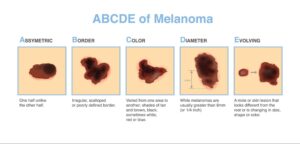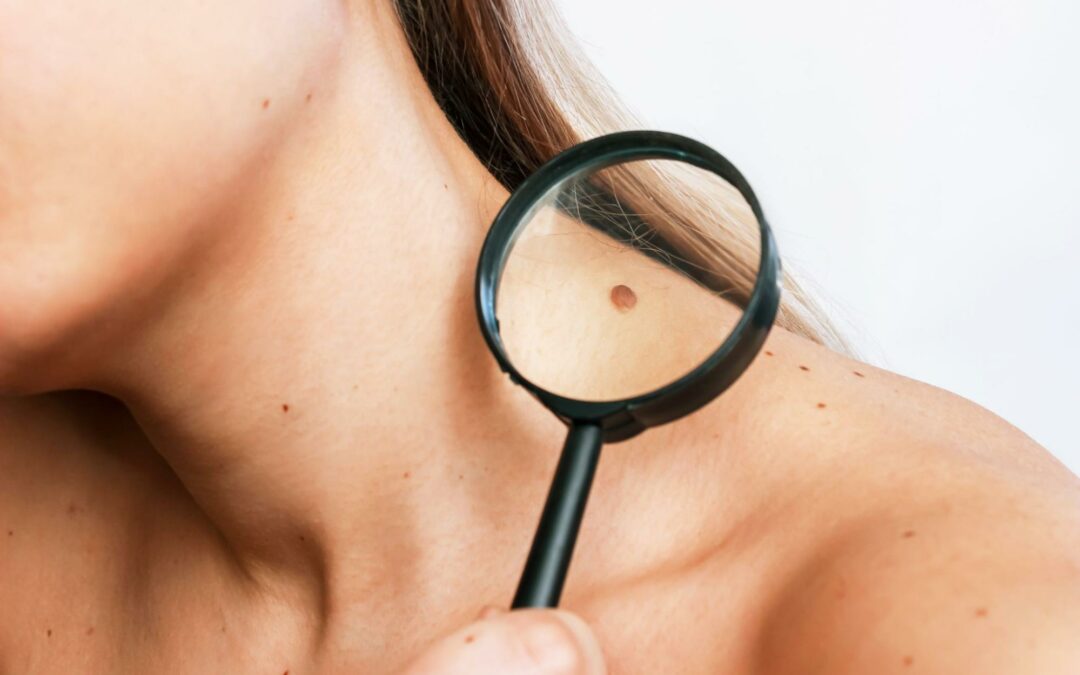Moles are common skin occurrences that most people find harmless, yet sometimes they can become an aesthetic concern or a health risk.
If you’ve noticed changes in a mole’s appearance or simply want to make sure of your skin’s health, dermatology is your go-to field.
Scroll deeper to find out how expert dermatological care can help you manage and understand the different types of moles you might encounter.
What is Dermatology?
Dermatology is the branch of medicine focused on the diagnosis and treatment of skin, hair, and nail disorders. At Metropolis Dermatology, we offer comprehensive mole checks as an essential part of our services.
These checks involve examining all types of moles, from the common mole to atypical ones, to assess their condition and determine the appropriate cosmetic treatments or medical interventions needed.
Early detection and management of mole changes are vital for maintaining skin health and preventing complications.
How Dermatology Can Help You Understand and Treat Moles
Dermatology provides several key services that aid in the effective management of moles. Here are detailed ways in which visiting our expert provider can be beneficial:
Expert Diagnosis
Dermatologists are trained to differentiate between various types of moles and identify signs of atypical moles that may require closer monitoring or removal.
By using advanced diagnostic tools like dermatoscopy, dermatologists can look beneath the surface of the skin to analyze patterns and structures that are not visible to the naked eye.
This helps in assessing whether a mole is benign, potentially harmful, or cancerous.
Monitoring Changes
Regular mole checks by a dermatologist help track any changes in your moles’ size, shape, color, or texture.
Dermatologists recommend that anyone with numerous moles or atypical moles undergo routine examinations to ensure that any malignant transformation is caught early. It is recommended that routine mole screenings occur once every year, but those with numerous moles or have higher risk for developing skin cancer should be checked every 6 months or less.
This proactive approach can be life-saving, especially for detecting early stages of melanoma.
Safe Removal Procedures
If a mole needs to be removed for either cosmetic reasons or because it poses a health risk, dermatologists can perform safe and effective removal procedures.
Techniques may include surgical excision, where the mole is cut out along with a small area of surrounding skin, or less invasive methods like shave removals or laser treatments, depending on the type of mole and its location.
These procedures are done under local anesthesia and are usually quick, with minimal discomfort.

Post-Removal Care and Analysis
After removing a mole, it is important to properly care for the area to prevent infection and minimize scarring.
Our expert team will provide detailed care instructions and monitor the site for any unusual changes.
Additionally, the removed mole is typically sent to a lab for histological analysis to make sure there are no cancerous cells and that it was completely removed.
Education on Prevention and Self-Examination
Dermatologists also educate patients on how to perform self-examinations and protect their skin from sun damage, which is linked to the development of atypical moles and skin cancer.
Understanding the ABCDEs of moles (Asymmetry, Border, Color, Diameter, Evolving) is key to spotting troublesome changes early and seeking timely treatment.
At Metropolis Dermatology in Los Angeles, Pasadena, LA’s Westside (Brentwood), and Costa Mesa, CA, we are dedicated to providing top-tier care in understanding and treating all types of skin conditions, including moles.
Our experienced team uses the latest advancements in dermatology to guarantee you receive the best treatment while maintaining the highest standards of safety and aesthetics.
Call us now to schedule your mole check and take an important step toward safeguarding your skin’s health and beauty!

